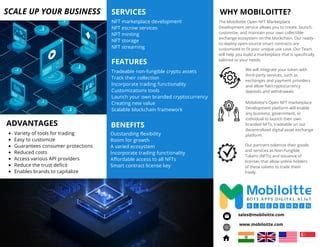The Future of Finance: Understanding Cryptocurrencies, Cryptocurrency Exchanges, Token Mining, and Mnemonics
The world of cryptocurrency has come a long way since its inception in 2009. From its early days as a niche market for enthusiasts to its current mainstream status, the cryptocurrency space has experienced significant growth and innovation. In this article, we’ll delve into the basics of cryptocurrencies, cryptocurrency exchanges, token mining, and mnemonics, and examine how these concepts are shaping the future of finance.
What is cryptocurrency?
Crypto, short for cryptocurrency, refers to digital or virtual currencies that use cryptography to secure financial transactions. These currencies are decentralized, meaning they operate independently of central banks and governments and are not controlled by a government. The most well-known example of a cryptocurrency is Bitcoin (BTC).
Cryptocurrency Exchanges
A cryptocurrency exchange is an online platform where users can buy, sell, and trade cryptocurrencies. There are several types of exchanges, including:
- Peer-to-peer (P2P) exchanges: These platforms allow individuals to exchange their cryptocurrencies for each other.
- Decentralized Exchanges (DEX): These exchanges use a decentralized network of nodes to facilitate trading without intermediaries.
- Brokers

: These platforms act as intermediaries, matching buyers and sellers through a centralized platform.
Popular cryptocurrency exchanges include Binance, Coinbase, and Kraken. These platforms offer a variety of features, including advanced trading tools, security measures, and user-friendly interfaces.
Token Mining
Token mining is the process of creating new cryptocurrencies and adding them to existing ones. Token minting can be done in a variety of ways, including:
- Initial Coin Offerings (ICOs): These events allow developers to raise funds for their projects in exchange for a certain number of tokens.
- Token Generation Events: These occur when a project is launched by issuing an initial token or selling a token.
For example, the decentralized finance (DeFi) protocol Uniswap is built on the Ethereum blockchain and allows users to create and mint new tokens. The native cryptocurrency of this protocol is USDT (Tether), which can be used for lending, borrowing, and trading.
Mnemonic
A mnemonic is a secret phrase or sequence that helps individuals remember complex cryptographic keys. Mnemonics are very important in the world of cryptocurrency because they allow users to securely store their private keys and restore access to their accounts in the event of loss or theft.
A well-chosen mnemonic can help prevent account hijacking and keep a person’s cryptocurrency safe. There are a variety of ways to create mnemonics, including:
- Word association: Using related words or phrases to associate with each key.
- Story telling: Creating a story that includes all the corresponding keys.
Popular examples of mnemonic storage solutions include hardware wallets such as Trezor and Ledger Live, as well as software wallets such as MetaMask and Electrum.
The Future of Finance: Trends and Innovations
As the cryptocurrency space continues to evolve, we can expect to see several trends and innovations that shape the future of finance. Some of the potential developments include:
- Decentralized Finance (DeFi): The integration of blockchain technology into traditional financial systems.
*Non-Fungible Tokens (NFTs): Unique digital assets that represent ownership of in-game items, art, or real-world objects.
- Central Bank Issued Cryptocurrencies: New types of digital currencies that are tied to the value of a central bank currency.
Conclusion
The world of cryptocurrency is evolving rapidly and offers endless opportunities for innovation.
Lascia un commento